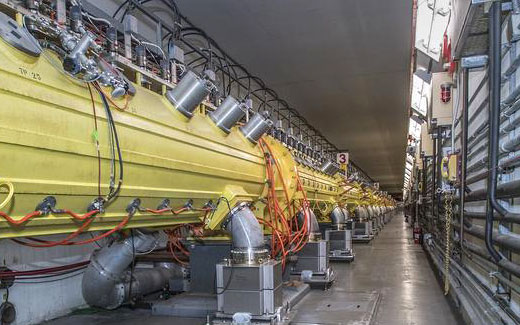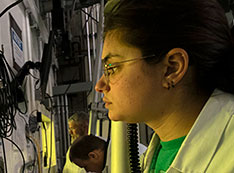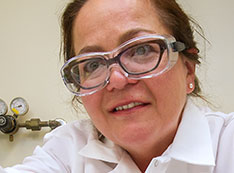
Medical Isotopes
Accelerating disease treatment
Brookhaven’s novel particle accelerator complex makes the Lab a national leader in the research, production, and processing of commercially unavailable radioisotopes. These isotopes have widespread applications in medicine, from disease diagnosis to treatment, as well as in national security.
The Brookhaven Linac Isotope Producer (BLIP) is one of the Nation’s few facilities capable of producing key isotopes. Thanks to its connection to the Lab’s collider-accelerator complex, BLIP employs a high energy particle accelerator to tune the energy level needed for producing select isotopes.
Isotopes made at BLIP enable physicians to perform millions of non-invasive medical imaging scans every year, helping to detect illnesses such as heart disease and monitor patients’ response to treatments. Technetium-99m, first developed at Brookhaven Lab in the 1950s, is responsible for 80 percent of the nuclear medical imaging procedures performed throughout the world. Today, researchers at Brookhaven continue to produce many medical isotopes and are even developing new ones.
Targeted Cancer Therapy
In collaboration with the U.S. Department of Energy’s Oak Ridge and Los Alamos National Laboratories, Brookhaven Lab has developed a method to produce actinium-225, an isotope that can kill cancer cells without harming healthy tissue. While actinium-225 has demonstrated high effectiveness for treating metastatic cancers, its availability is extremely limited and insufficient for full-scale clinical trials and drug development. Researchers at the three collaborating laboratories are working to scale up the production of actinium-225, taking advantage of the labs’ unparalleled research facilities.
Future Isotope Facilities
As the need for isotopes is expected to grow, Brookhaven is planning to build new facilities that will help resolve their limited supply. One planned facility is designed to triple the proton energy and increase the beam current of BLIP, while a second facility will use light ion beams to enable the production of new isotopes that cannot be made from currently-used proton beams.









